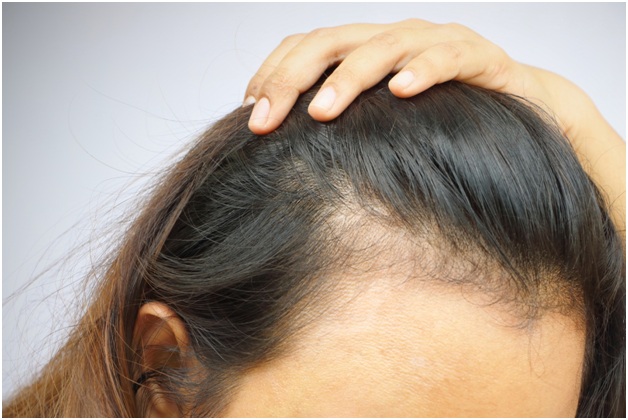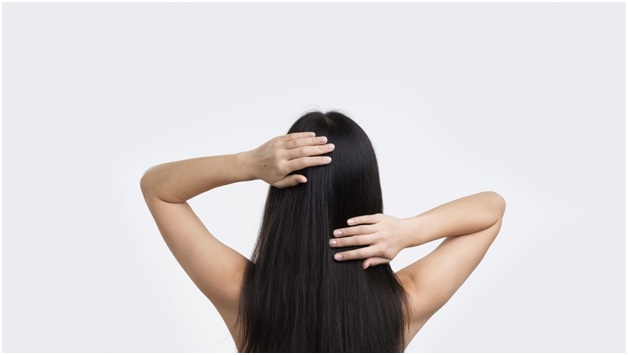Hair can be categorized in several ways. From color to texture to length to coarseness, and finally density. The hair’s density is a majorfactor that would determine the type of hairstyle you can make as well as the kind of products you can use. But what exactly is hair density and how can one figure it out? Theseare some of the things this article focuses on that you need to know about hair density.
Table of Contents
What is Hair Density?
To simply put, hair density means the number of hair strands that grow on your scalp on every square inch. However, you do not necessarily need to use a microscope to check and count the individual strand of hair on your scalp as this would be time-consuming and maybe futile in the end. You may read this to learn more about the number of hair on the human head.
You may be wondering if you cannot use a microscope to count the hairs on the head, then how do you determine your hair’s volume. It is simple, you do not need the exact number to categorize yourself under a particular density level; you simply need a general idea whether it is on the thick or thin side.
With that being said, let us discuss how hair density can be figured out.
How to Determine Hair Density

Counting everystrand in each section of the scalp is the most accurate means to determine its density; however, this method also happens to be impractical. Most researchers in labs commonly use a technique known as trichoscopy to do this.
Another method that is even more practical for achieving this is the use of a phototrichogram. This allows the examiner to measure every individual strand growth’s phase and density.
However, you can measure your hair’s density by yourself at home simply by inspecting it visually. To do this, you would need a mirror, and then you would try to maneuver the hairs on your head to see the scalp. If you do not have to move the hairs on your head to see the scalp then your thickness is likely low. If you need to slightly move your hairs then the volume is likely medium. Finally, if you have difficulty seeing the scalp then your density is mostly high.
You can also take a popular online test called the ponytail test. To do this, you would have to ponytail your hair and then measure the circumference. Then you would measure the volume based on this:
- If the ponytail’s circumference is less than two inches then you are on the low side.
- If the ponytail’s circumference is between two to three inches then you are in the middle.
- If the ponytail’s circumference is four inches then you are on the high side.
You can watch this video https://www.youtube.com/watch?v=GnOFDFbgj0E or a visual explanation of this test. However, you must note that this test does not give an accurate result as other factors like each hair’s thickness can affect the circumference of the ponytail. People whose hairs are too short to be tied into a ponytail also cannot take this test.
If you are unable to properly do the measurement by yourself then you may ask a hairdresser or stylist to help you with it.
How to Care for Your Hair Based on Its Density

If you have successfully measured your hair’s density, then you now have an initiative on how to properly take care of your hair based on its volume.
1. Low
If you fall under this category, then we recommend that you avoid using heavy products like conditioners, oils, and extensions that can put a strain on your hair. You need to use more products that would add to your hair’s volume, like dry shampoo, volumizing shampoos, and mousse.
The hairstyles that you opt for should also be ones that would make your hair’sappearance thicker and voluminous.
2. Medium
People under this category do not need to try too much to alter their hair’s volume. We would advise that you use products that would maintain your hair’s health while also experimenting with other products and hairstyles to your liking.
3. High
If you fall under this category then you would need heavy styling products such as butter, gels, and so on. These products will make sure that your hair is kept under control at all times. You may also invest in oils and serum to reduce frizz.
As for hairstyles, you would have to stick to ones that would eliminate excess bulk. You may also try layering as this can cause your hair’s appearance to look thinner.
Can Density be Increased?

The hair’s density is typically based on genetics, just like with other aspects like texture or color. Hairs grow out of what is called hair follicles, and you cannot alter the number you have. What this means is that you cannot change the volume of hair you have. To address concerns with hair density, you can explore the use of Finasteride, an effective solution for hair loss. While genetics largely determines the number of hair follicles, Finasteride can slow hair loss by blocking the hormone responsible for follicle miniaturization. This medication is suitable for men with androgenetic alopecia, or male pattern baldness, and can help maintain hair density. Consult with a doctor to determine if Finasteride is a suitable option for you.
However, if you need to cover up patchy areas on your scalp then you may consider hair transplantation. There are two techniques for this transplantation. They are Follicular Unit Extraction and Follicular Unit Transplant. During FUT, a skin strip is cut mostly from behind the scalp;next, individual follicles are removed. While with FUE, individual follicles are directly removed out of the scalp.
You can also maximize the volume by making sure your diet is healthy. If you want to know more about how you can maximize your hair’s volume then you can visit Keranique for more information. The following nutrients can influence your hair’s growth:
- Vitamin C
- B vitamins
- Biotin
- Vitamin A
- Iron
- Vitamin E
- Vitamin D
- Zinc
- Protein
Conclusion
Hair density means the number of hair strands that grow on your scalp on every square inch. A person can measure this at home either by visually inspecting their scalp or doing the ponytail test. Knowing your hair’s volume can help you determine the type of hairstyles and products you can use.





